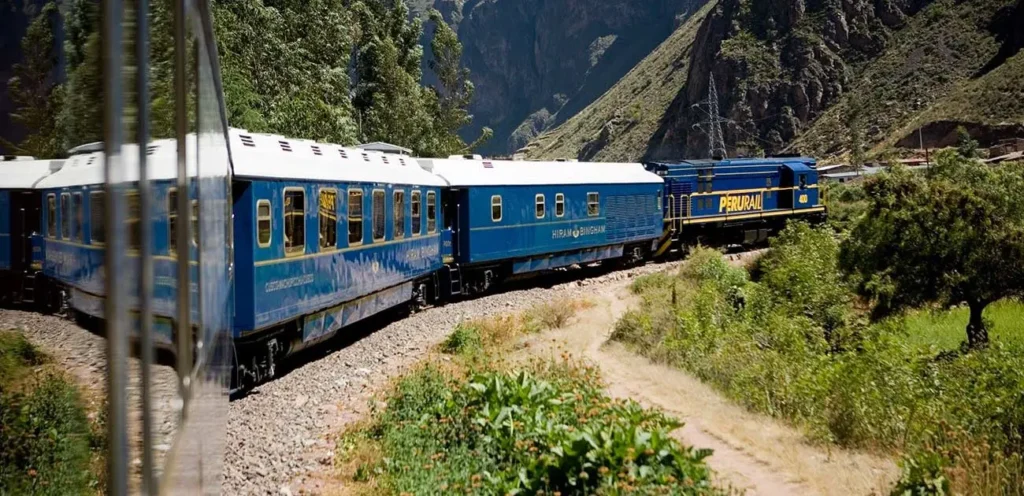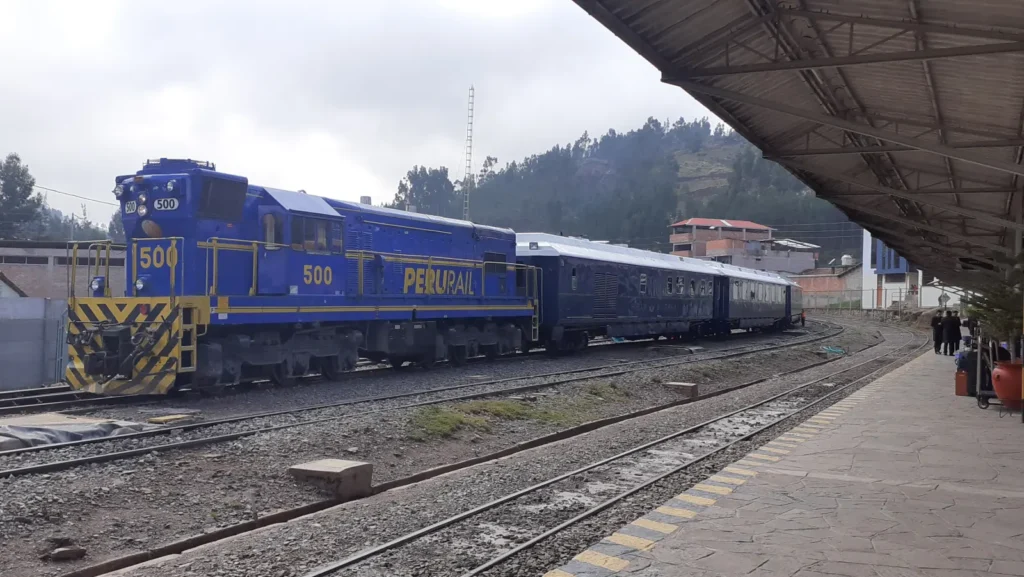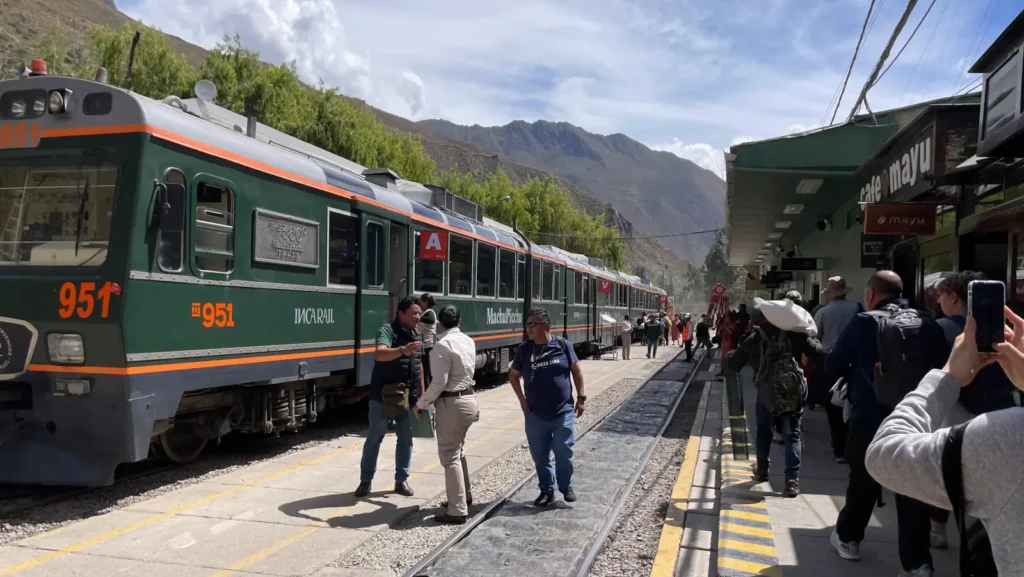Machu Picchu, declared a World Heritage Site by UNESCO and one of the New Seven Wonders of the World, is one of the most emblematic tourist destinations in Peru. However, its location in the middle of the Andean mountain range and surrounded by deep canyons makes access difficult. Since there are no direct roads that allow access by car, the train has become the most efficient, safe and comfortable means of transportation to reach the archaeological site. This detailed guide explains everything a traveler should know about rail services to Machu Picchu, including routes, operating companies, prices, recommendations and key logistical aspects.

Trains connecting to Machu Picchu depart mainly from two points in the Cusco region: the Poroy station, located on the outskirts of the city of Cusco, and the Ollantaytambo station, located in the heart of the Sacred Valley of the Incas. Both stations are connected to the railway system that culminates in the town of Aguas Calientes, also known as Machu Picchu Pueblo, which is the closest land access point to the Inca citadel.
The Poroy station is located about 20 kilometers from Cusco, in an elevated area at 3,860 meters above sea level. Although it offers direct service, its high altitude location and fewer daily departures make it less frequented by tourists. On the other hand, Ollantaytambo, at 2,792 meters above sea level, is the most popular option due to its better connection with tourist circuits in the Sacred Valley, as well as the higher frequency of departures. In addition, its lower altitude may be more favorable for those who are still in the process of acclimatizing to the altiplano.

The train ride from any of the departure points offers a unique visual experience, with landscapes that combine rugged mountains, meandering rivers, Inca agricultural terraces and high jungle areas. The duration of the journey varies according to the station of origin. From Ollantaytambo, the trip takes approximately one hour and forty-five minutes. From Poroy, the time increases to about two and a half hours. There is also an alternative station in Cusco called Wanchaq, although the travel time from there is slightly longer than from Poroy because the train makes several technical stops.
The final destination of all train services is the Aguas Calientes station, a small town nestled at the bottom of the Urubamba River valley, surrounded by tropical vegetation and with basic services for tourists, such as hotels, restaurants and stores. From Aguas Calientes, visitors must travel to the entrance of Machu Picchu, either by a tourist bus that makes the ascent by a zigzag road in about 25 minutes, or through a walk of about an hour and a half by a cobblestone path that starts from the village.
Railway operating companies
Currently, two private companies have concessions to operate trains to Machu Picchu: PeruRail and Inca Rail. Both offer regular services throughout the year, with greater frequency during the high season, from May to October. Each company has different categories of service, which vary in comfort, equipment and price.
PeruRail is the company with the longest trajectory in the region. It operates under Peruvian government authorization and has a modern fleet that includes cars with large windows, reclining seats, air conditioning and on-board entertainment services. Among its options are the Voyager Train, standard service; the Expedition Train, with a design inspired by Andean culture; the Vistadome Train, which has a panoramic roof for a better view of the landscape; and the Hiram Bingham Train, a luxury service that includes gourmet breakfast or lunch, open bar, live music and personalized attention. The latter is oriented to travelers with high purchasing power and is considered an exclusive experience.


Prices and seasons
The cost of a train ticket depends on several factors, including the company, the type of service, the station of origin, the date of travel and how far in advance the purchase is made. In general, prices for a round-trip ticket range from US$100 to US$350 per person in the standard and premium categories. Luxury service, such as the Hiram Bingham Train, can exceed US$900 per passenger, including meals, drinks and cultural experiences.
It is important to note that the high season, which coincides with the austral summer and the dry season in the Andes, records higher demand and, therefore, higher prices. During these months, especially in July and August, it is common for trains to operate at full capacity. In contrast, between November and March, the rainy season, prices may be more affordable, although there is a risk of temporary interruptions due to adverse weather conditions.
How to buy tickets
The most recommended way to purchase train tickets is through the official websites of the companies: perurail.com and incarail.com. Both platforms allow you to select the date, time, origin, destination and service category, in addition to offering secure credit card payment options. It is essential to make the purchase in advance, preferably several months in advance if the trip is planned for the high season, since the quotas are limited and sell out quickly.
It is also possible to purchase tickets through authorized travel agencies in Cusco or Ollantaytambo, although in these cases additional commissions may apply. Buying directly at the stations is not recommended, especially in high season, due to the high probability of unavailability.
At the time of purchase, the passenger’s full name and ID number (DNI for Peruvian citizens or passport for foreigners) are required, as this information will be verified at the time of boarding the train.
Travel recommendations
To ensure a safe and pleasant experience, it is advisable to follow some basic recommendations. First of all, it is recommended to arrive at the station at least 30 minutes before the departure time, as trains usually leave on time. It is essential to present the original identity document, as it will be compared with the name registered on the ticket.
During the journey, it is advisable to wear comfortable clothing and a light jacket, as the temperature can vary significantly between the point of origin and Aguas Calientes, which is at a lower altitude. It is also useful to bring water, snacks and personal items, although both operators offer on-board vending services. Although some trains have Wi-Fi connection, this can be unstable due to the geography of the route, so it should not be considered a guaranteed service.
Another key aspect is to keep the train ticket during the whole trip, since it will be necessary for the return. Likewise, the return time should be properly coordinated with the visit to Machu Picchu, taking into account that the last train back usually leaves between 7 and 9 pm, depending on the company and the station.
Other forms of access to Machu Picchu
Although the train is the most commonly used option, there are alternatives for those seeking a more adventurous or economical experience. The best known is the Inca Trail, a four-day route that starts at Km 82 of the railway and crosses Andean landscapes, rural communities and minor archaeological sites before reaching Machu Picchu through the Sun Gate. This trek requires reservations months in advance, as the number of visitors is limited by environmental regulations.
There are also alternative routes such as the Choquequirao Trail, which is longer and more demanding, or the access through the town of Hidroeléctrica, which allows you to walk from Aguas Calientes to the train station and then continue on foot along the train track for approximately three hours. The latter option is popular with budget travelers, although it involves walking on sleepers and requires caution.
Conclusion
The train continues to be the most efficient and comfortable way to access Machu Picchu, especially for those seeking to combine safety, comfort and a comprehensive tourist experience. With professional operating companies, differentiated services and a route of remarkable scenic beauty, rail travel has become an essential part of the experience of visiting this world heritage icon. Planning ahead, choosing the right type of service and coordinating schedules with the visit to the archaeological site are fundamental steps to guarantee a smooth trip.
Machu Picchu is not only a destination, but a journey through time. And the train, more than a means of transportation, is a bridge between the modern world and the grandeur of the ancient Inca empire.
No comments:
Post a Comment